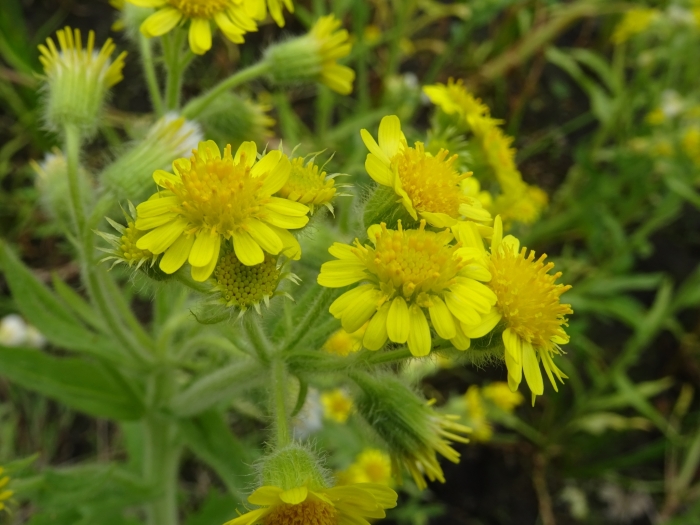Swamp Ragwort
(Tephroseris palustris)
Swamp Ragwort (Tephroseris palustris)
/
/

koha1
CC BY 4.0
Image By:
koha1
Recorded By:
Copyright:
CC BY 4.0
Copyright Notice:
Photo by: koha1 | License Type: CC BY 4.0 | License URL: http://creativecommons.org/licenses/by/4.0/ | Rights Holder: koha1 | Publisher: iNaturalist | Date Created: 2020-06-06T10:17Z |





















Estimated Native Range
Summary
Tephroseris palustris, commonly known as swamp ragwort, is a herbaceous plant that can be annual, biennial, or occasionally perennial. It is native to wetland habitats including marshes, stream banks, and slough areas across North America, particularly in regions with freezing winters. Swamp ragwort thrives in moist to wet soils found in damp meadows, swamps, sandy pond edges, and roadside ditches, at altitudes ranging from sea level to 3,300 feet. It typically stands 3 to 4 feet tall and is most noticeable when its bright yellow umbel flowers bloom from May to early July.
Swamp ragwort is valued for its vibrant yellow flowers that add color to wetland areas and its ability to thrive in moist soil conditions where other plants may struggle. It is often used in naturalistic plantings and wetland restoration projects. In cultivation, it requires consistently moist or wet soil and can tolerate full sun to part shade. While not commonly grown in traditional gardens, it serves an ecological role in supporting pollinators. Care should be taken as it can potentially spread in suitable conditions and may require management to prevent unwanted colonization.CC BY-SA 4.0
Swamp ragwort is valued for its vibrant yellow flowers that add color to wetland areas and its ability to thrive in moist soil conditions where other plants may struggle. It is often used in naturalistic plantings and wetland restoration projects. In cultivation, it requires consistently moist or wet soil and can tolerate full sun to part shade. While not commonly grown in traditional gardens, it serves an ecological role in supporting pollinators. Care should be taken as it can potentially spread in suitable conditions and may require management to prevent unwanted colonization.CC BY-SA 4.0
Plant Description
- Plant Type: Herb
- Height: 1.5-2.5 feet
- Width: 0.5-1 feet
- Growth Rate: Moderate
- Flower Color: Yellow
- Flowering Season: Summer
- Leaf Retention: Deciduous
Growth Requirements
- Sun: Full Sun, Part Shade
- Water: Medium, High
- Drainage: Medium, Slow
Common Uses
Low Maintenance, Water Garden
Natural Habitat
Wetland habitats including marshes, stream banks, and slough areas across North America
Other Names
Common Names: Fen Ragwort
Scientific Names: , Tephroseris palustris, Cineraria congesta, Cineraria palustris, Cineraria palustris f. lacerata, Cineraria palustris f. palustris, Cineraria palustris f. simplicior, Cineraria palustris subsp. congesta, Cineraria palustris subsp. palustris, Cineraria palustris var. edentula
GBIF Accepted Name: